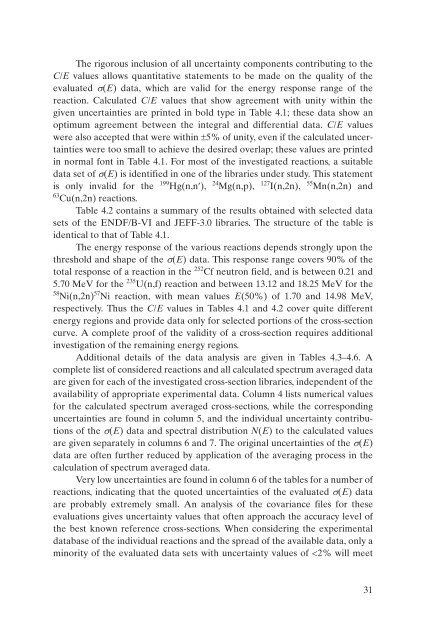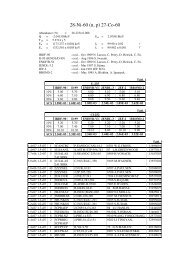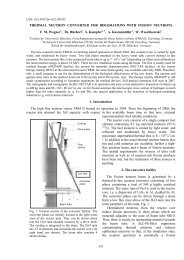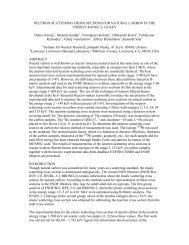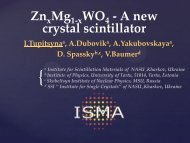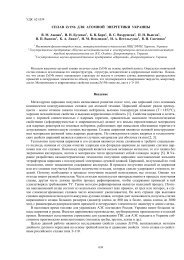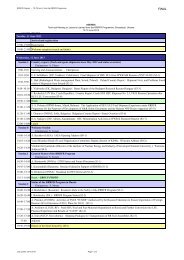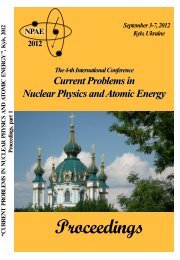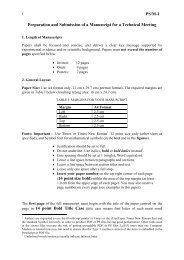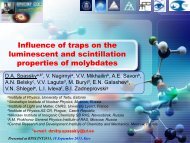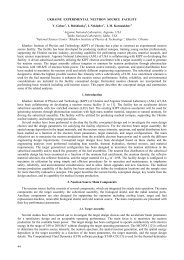International Reactor Dosimetry File 2002 - IAEA Publications
International Reactor Dosimetry File 2002 - IAEA Publications
International Reactor Dosimetry File 2002 - IAEA Publications
You also want an ePaper? Increase the reach of your titles
YUMPU automatically turns print PDFs into web optimized ePapers that Google loves.
The rigorous inclusion of all uncertainty components contributing to the<br />
C/E values allows quantitative statements to be made on the quality of the<br />
evaluated σ(E) data, which are valid for the energy response range of the<br />
reaction. Calculated C/E values that show agreement with unity within the<br />
given uncertainties are printed in bold type in Table 4.1; these data show an<br />
optimum agreement between the integral and differential data. C/E values<br />
were also accepted that were within ±5% of unity, even if the calculated uncertainties<br />
were too small to achieve the desired overlap; these values are printed<br />
in normal font in Table 4.1. For most of the investigated reactions, a suitable<br />
data set of σ(E) is identified in one of the libraries under study. This statement<br />
is only invalid for the 199 Hg(n,n′), 24 Mg(n,p), 127 I(n,2n), 55 Mn(n,2n) and<br />
63 Cu(n,2n) reactions.<br />
Table 4.2 contains a summary of the results obtained with selected data<br />
sets of the ENDF/B-VI and JEFF-3.0 libraries. The structure of the table is<br />
identical to that of Table 4.1.<br />
The energy response of the various reactions depends strongly upon the<br />
threshold and shape of the σ(E) data. This response range covers 90% of the<br />
total response of a reaction in the 252 Cf neutron field, and is between 0.21 and<br />
5.70 MeV for the 235 U(n,f) reaction and between 13.12 and 18.25 MeV for the<br />
58 Ni(n,2n) 57 Ni reaction, with mean values E(50%) of 1.70 and 14.98 MeV,<br />
respectively. Thus the C/E values in Tables 4.1 and 4.2 cover quite different<br />
energy regions and provide data only for selected portions of the cross-section<br />
curve. A complete proof of the validity of a cross-section requires additional<br />
investigation of the remaining energy regions.<br />
Additional details of the data analysis are given in Tables 4.3–4.6. A<br />
complete list of considered reactions and all calculated spectrum averaged data<br />
are given for each of the investigated cross-section libraries, independent of the<br />
availability of appropriate experimental data. Column 4 lists numerical values<br />
for the calculated spectrum averaged cross-sections, while the corresponding<br />
uncertainties are found in column 5, and the individual uncertainty contributions<br />
of the σ(E) data and spectral distribution N(E) to the calculated values<br />
are given separately in columns 6 and 7. The original uncertainties of the σ(E)<br />
data are often further reduced by application of the averaging process in the<br />
calculation of spectrum averaged data.<br />
Very low uncertainties are found in column 6 of the tables for a number of<br />
reactions, indicating that the quoted uncertainties of the evaluated σ(E) data<br />
are probably extremely small. An analysis of the covariance files for these<br />
evaluations gives uncertainty values that often approach the accuracy level of<br />
the best known reference cross-sections. When considering the experimental<br />
database of the individual reactions and the spread of the available data, only a<br />
minority of the evaluated data sets with uncertainty values of


